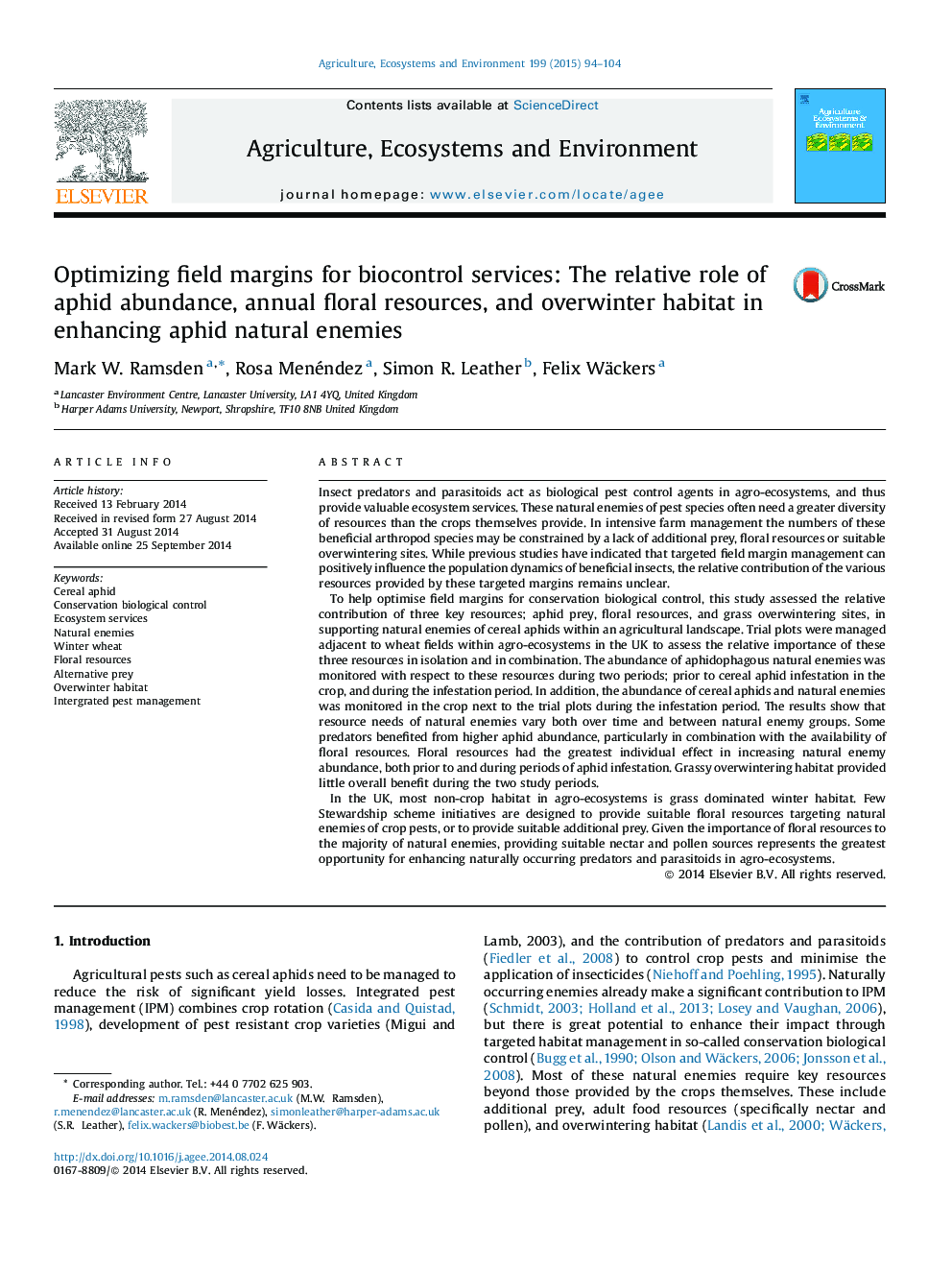| کد مقاله | کد نشریه | سال انتشار | مقاله انگلیسی | نسخه تمام متن |
|---|---|---|---|---|
| 2413848 | 1552053 | 2015 | 11 صفحه PDF | دانلود رایگان |
• Provision of aphid prey, floral resources, and winter refuge supports natural enemies.
• The importance of these key resources changes between natural enemies and over time.
• Floral resources supported the most consistent increase in natural enemy abundance.
• Winter habitat had little effect on flight capable natural enemies during this study.
• Providing all three resources would support a robust natural enemy community.
Insect predators and parasitoids act as biological pest control agents in agro-ecosystems, and thus provide valuable ecosystem services. These natural enemies of pest species often need a greater diversity of resources than the crops themselves provide. In intensive farm management the numbers of these beneficial arthropod species may be constrained by a lack of additional prey, floral resources or suitable overwintering sites. While previous studies have indicated that targeted field margin management can positively influence the population dynamics of beneficial insects, the relative contribution of the various resources provided by these targeted margins remains unclear.To help optimise field margins for conservation biological control, this study assessed the relative contribution of three key resources; aphid prey, floral resources, and grass overwintering sites, in supporting natural enemies of cereal aphids within an agricultural landscape. Trial plots were managed adjacent to wheat fields within agro-ecosystems in the UK to assess the relative importance of these three resources in isolation and in combination. The abundance of aphidophagous natural enemies was monitored with respect to these resources during two periods; prior to cereal aphid infestation in the crop, and during the infestation period. In addition, the abundance of cereal aphids and natural enemies was monitored in the crop next to the trial plots during the infestation period. The results show that resource needs of natural enemies vary both over time and between natural enemy groups. Some predators benefited from higher aphid abundance, particularly in combination with the availability of floral resources. Floral resources had the greatest individual effect in increasing natural enemy abundance, both prior to and during periods of aphid infestation. Grassy overwintering habitat provided little overall benefit during the two study periods.In the UK, most non-crop habitat in agro-ecosystems is grass dominated winter habitat. Few Stewardship scheme initiatives are designed to provide suitable floral resources targeting natural enemies of crop pests, or to provide suitable additional prey. Given the importance of floral resources to the majority of natural enemies, providing suitable nectar and pollen sources represents the greatest opportunity for enhancing naturally occurring predators and parasitoids in agro-ecosystems.
Journal: Agriculture, Ecosystems & Environment - Volume 199, 1 January 2015, Pages 94–104
